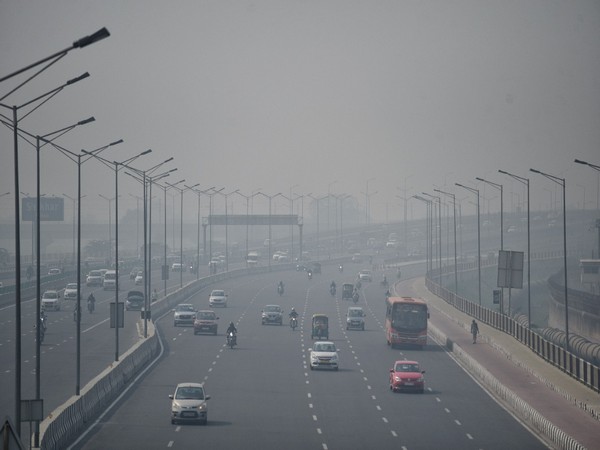Breath of Relief: Delhi’s Air Quality Index (AQI) Hits Record Low in July Since 2019 After Heavy Rainfall

Breath of Relief: Delhi’s Air Quality Index (AQI) Hits Record Low in July Since 2019 After Heavy Rainfall
In a much-needed respite for the residents of Delhi, the capital city witnessed a remarkable drop in air pollution levels, recording the lowest Air Quality Index (AQI) in the month of July since 2019. The significant improvement in air quality came as a result of heavy rainfall in the region, washing away pollutants that had been shrouding the city for months.

The AQI, a metric used to measure the concentration of pollutants in the air, is a crucial indicator of the overall air quality. A lower AQI signifies cleaner and healthier air for breathing, while a higher AQI indicates increased levels of pollutants, posing serious health risks, especially to vulnerable groups such as children, the elderly, and individuals with respiratory conditions.
For several years, Delhi has been grappling with severe air pollution, particularly during the winter months when the phenomenon of “smog” becomes a common sight, caused by a combination of vehicular emissions, industrial activities, construction dust, and stubble burning in neighboring states. The situation during summers has not been much better, with high temperatures exacerbating the pollution problem.
However, this July, Delhiites experienced a breath of fresh air, quite literally. The city’s AQI dropped to a level not seen in years, primarily due to the arrival of the monsoon season. The much-awaited monsoon showers arrived on schedule, bringing with them heavy rainfall that thoroughly cleansed the atmosphere and washed away the accumulated pollutants.

Powerful downpours were witnessed across Delhi and its surrounding areas, replenishing water bodies, reinvigorating green spaces, and significantly lowering particulate matter concentrations. This natural cleansing process proved to be a boon for the city’s air quality, leading to the unprecedented drop in AQI.
In the days following the rainfall, authorities and environmental agencies observed a steady decline in the concentration of harmful pollutants such as PM2.5 and PM10, nitrogen dioxide (NO2), sulfur dioxide (SO2), and carbon monoxide (CO). These pollutants, which are typically released from vehicles, industries, and other anthropogenic activities, had been lingering in the air for months, causing discomfort and health hazards for millions of residents.
Mr. Rajesh Kumar, a local resident, expressed his relief, saying, “This year, we were worried that the air quality might worsen again, but the monsoon showers have brought about a positive change. We can breathe without feeling a constant discomfort in our throats and chests. It’s such a relief, especially for children and the elderly.”

Health experts also lauded the drop in pollution levels, emphasizing the significant impact of cleaner air on public health. Dr. Anjali Singh, a pulmonologist, stated, “Air pollution has been linked to various respiratory and cardiovascular ailments. The improvement in air quality during this period can lead to a reduction in respiratory symptoms and lessen the burden on healthcare facilities. It is crucial to maintain this trend and continue implementing measures to control pollution even after the monsoon season.”
While the rainfall has provided temporary relief, it is essential to recognize that long-term solutions are required to address Delhi’s persistent air pollution problem. The city faces unique challenges due to its high population density, rapid urbanization, and complex mix of pollution sources. Sustainable and integrated approaches are necessary to tackle this issue effectively.
Government authorities and environmental agencies have already implemented several measures over the years to combat air pollution, including the introduction of cleaner fuels, strict emission norms for industries, promoting public transportation, and encouraging green initiatives. The success of these efforts is evident in the remarkable drop in AQI during the current monsoon season.
However, experts and citizens alike stress the need for continuous monitoring and proactive actions to sustain this progress. Strict enforcement of environmental regulations, efficient waste management, and adoption of renewable energy sources are among the key steps recommended to curb pollution levels and maintain cleaner air.
As the monsoon season progresses, residents of Delhi eagerly hope that the city’s air quality will remain favorable and that they can continue to enjoy the rejuvenating impact of the rain on their environment. This collective aspiration for cleaner air serves as a powerful reminder that, with concerted efforts and the right policies, it is possible to create a greener and healthier future for Delhi.
In conclusion, the recent record-low AQI in Delhi is a testament to the positive effects of heavy rainfall in combating air pollution. The monsoon showers brought much-needed relief to the city, cleansing the atmosphere and improving the overall air quality. However, the challenge lies ahead in sustaining this progress and implementing long-term solutions to address Delhi’s chronic air pollution issue. With a united effort from authorities, citizens, and various stakeholders, a cleaner and healthier Delhi can become a reality, and its residents can truly breathe easy.



